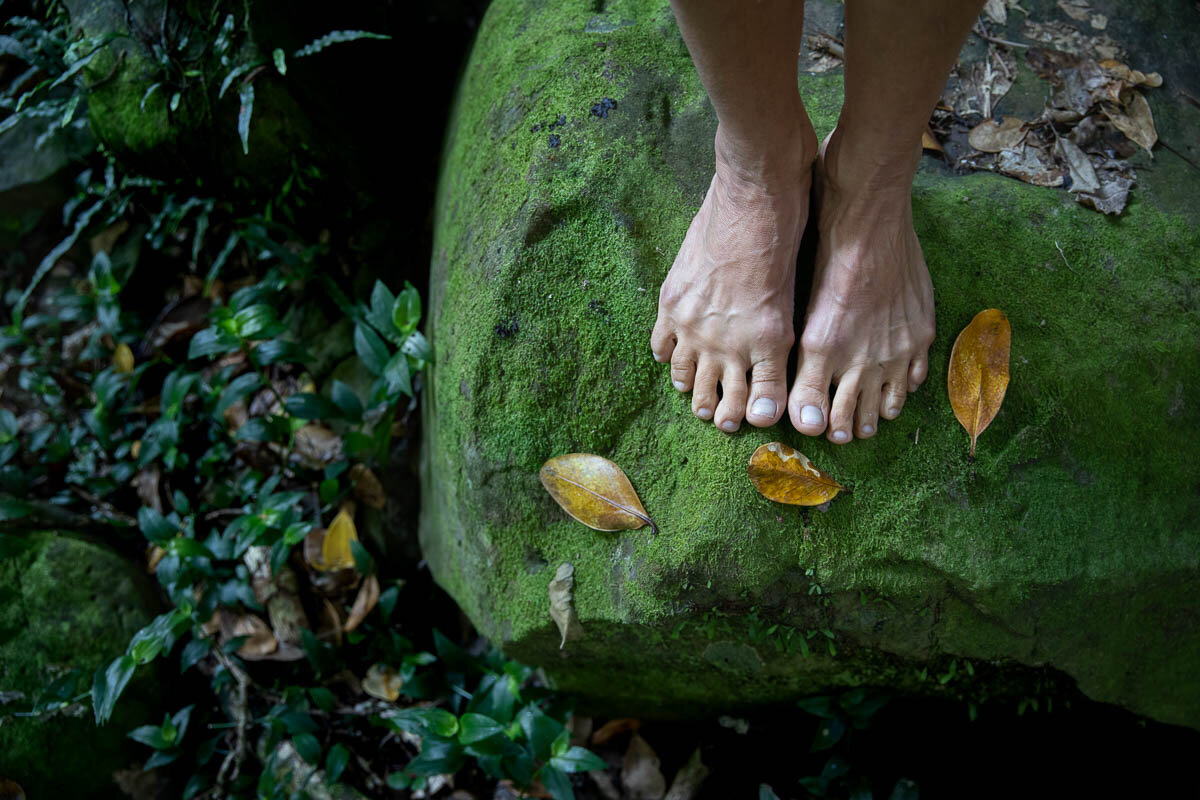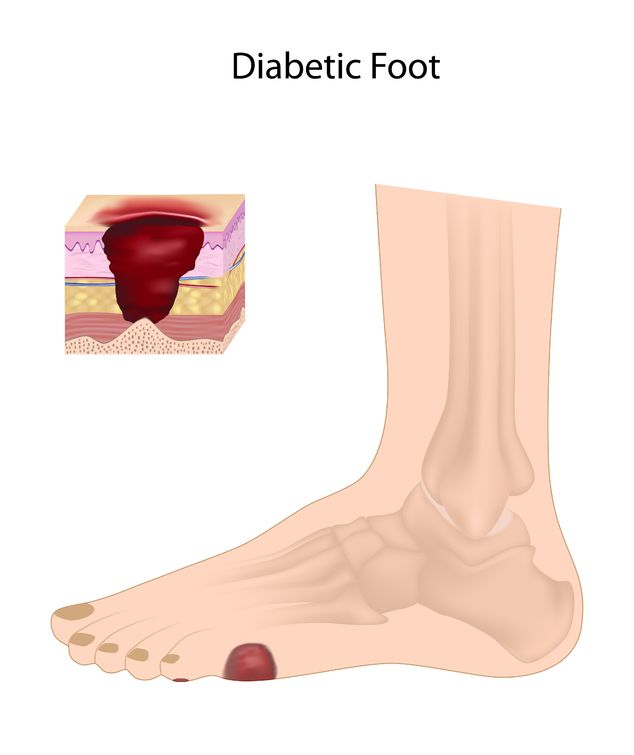Healing Diabetic Wounds

Foot infections and gangrene are common complications in people with diabetes. They may even end in the loss of a toe, foot, or even a leg!
Read more to know about the condition and how to lower your chances of having diabetes-related foot problems with Ayurvedic treatment….
Diabetes mellitus represents several diseases in which high blood glucose levels over time can damage the nerves, kidneys, eyes, and blood vessels. Uncontrolled diabetes leads to organ damage and decreases the body’s ability to fight infection.
Foot infections now account for the largest number of diabetes-related hospital bed-days and are the most common proximate, non-traumatic cause of amputations. Diabetic foot infections require careful attention and coordinated management, preferably by a multidisciplinary foot-care team.
What is Diabetic Foot?
The occurrence of wounds in the foot of a diabetic person with the following symptoms: gangrene, swelling, severe pain, burning sensation, foul smelling discharge from the wounds, non-healing despite proper attention etc., classifies the foot wound as “diabetic foot”. If not attended to promptly, this can lead to limb loss and be fatal as well.

What causes this condition?
Diabetic foot is usually caused by the combination of three factors. One: ischemia or reduced blood supply at the affected tissue. Two: diabetic peripheral neuropathy, the loss of sensation or numbness in the foot area where repeated skin injury goes unnoticed by the patient. Three: skin changes that are caused by excess sugar in the tissues that increases the chances of infection.
Prevalence
Approximately 8% of diabetic patients have a foot ulcer and 1.8% undergo an amputation.
How is it treated?
Diabetic foot management includes drainage of pus, cleaning of wound with local amputation (surgical removal of the affected area) of dead parts and appropriate antibiotics. However there are limitations to the treatments if the wound becomes gangrenous and life threatening infections set in.
Ayurveda contains a detailed description of ulcers and their causes, along with treatments based on the stage of the wound and presenting symptoms. Internal medications, external treatments, surgical treatments, panchakarma treatments, various dietary and lifestyle advices of Ayurveda help the patient with diabetic foot to recover completely without necessitating amputations.
Success Stories from I-AIM Healthcare
I-AIM Healthcare Center (www.iaimhealthcare.org) at Bangalore is specialized in treating such wounds. People from all over the globe visit us for managing diabetic wounds. Two success stories are mentioned here:
A male diabetic patient ~ 85years visited our hospital with all the toes of his right foot removed. This foot had all the signs of gangrene and modern medicine advised that it would have to be amputated. Instead, he opted for non-invasive management and visited I-AIM. Here, he was treated with internal medications and rigorous external Ayurvedic treatments. Antibiotic medications were halted and after treatment, there was no use of their further consumption as the infection had completely disappeared.
In another case, a male diabetic patient ~ 75years, visited us with non-healing, foul smelling, oozing wound at left leg near the calf muscles. His wound was caused due to burn from a motorbike silencer that had not healed for 6 months. We admitted the patient here for 10 days and performed Basti (medicated enema), accompanied by wound wash with medicated decoction and oil. Now the wound has completely healed.
Why delay? Prevention is better than cure! Although there are options to treat the diabetic wounds, Ayurveda offers safe and effective ways to control diabetes itself.
Visit I-AIM Healthcare Center for best Ayurvedic treatment of Diabetes and healing Diabetic wounds



